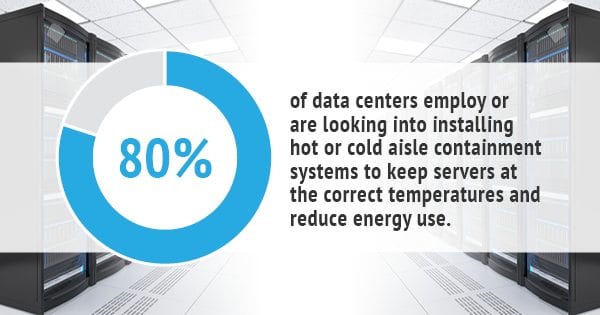
Data center management starts with the room’s environment. If organizations are not optimizing the center’s airflow, they could be wasting money on unnecessary energy costs. By properly equipping whichever types of server racks you have, you can optimize airflow and help your data center run as efficiently as possible. Follow these airflow tips to better manage your organization’s data.
- Switch to Hot and Cold Aisle Containment: With 80% of data centers already using this system or looking to make the switch, hot and cold aisle containment is useful in keeping servers at their optimal temperature and reducing energy use. If you haven’t switched over to this system yet, now is the time to do so. Hot and cold aisle containment involves cold air blowing to cool the servers, resulting in return of hot air.
- Seal Air Gaps: Within this contained system, it is important to keep hot air and cold air flowing in their designated areas, not seeping across the aisles. To prevent unnecessary air flow, look for small spaces where the air could be escaping. Block off the space between the data cabinets and the floor, as well as small gaps in cable cutouts. Install blanket panels to reduce airflow outside of the individual cabinets.
- Optimize Space: Once you have determined places where the air might be escaping, search for objects that could be blocking air flow. Not enough air flow is just as problematic as too much air flow, as your goal is optimal temperature. Place cables carefully to avoid large obstructing masses. While needs will vary for different types of server racks ,if your data racks have doors, choose models with holes.
- Use Thermal Modeling: This method used by Google helps identify points that are not at optimal temperature. By implementing thermal modeling, you can get a picture of the temperature of your data center’s airflow. This will allow you to pinpoint problematic areas in the center and make necessary changes.
By following air flow management best practices, making constant adjustments, and recording data, you can optimize your data center’s airflow for reduced energy use. Be sure to keep track of what is working for your organization and what is not working, as this information will inform any possible changes.
